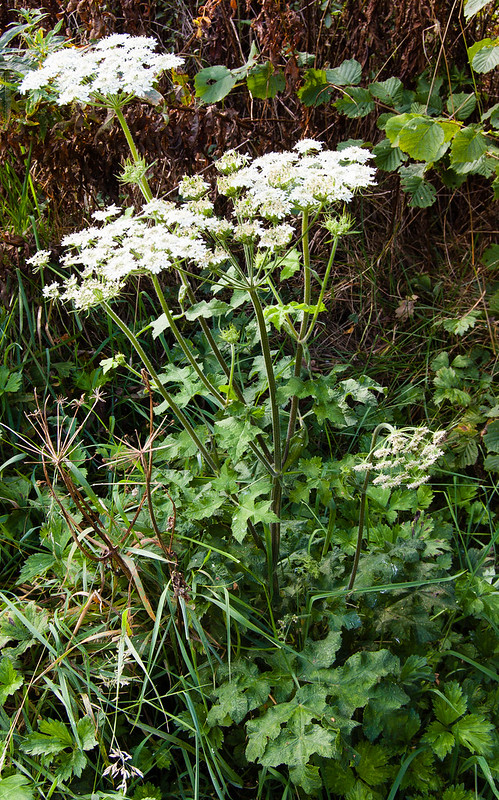The cow parsley or hogweed, Anthriscus sylvestris, is normally a summer-blooming plant. This specimen, on the edge of Valley Park, still had fine flowers when these pictures were taken on October 1st.
David
Inkcap again
A closer view of inkcaps already posted here. The picture above is of the newest mushroom, which has a surface still covered in fine white hair-like structures.
The other picture shows the second-newest, with the rim of the cap already marked by the ongoing deliquescence.
These are probably coprinus lagopides, a reasonably common inkcap, though one without a vernacular name. Alternatively, it may be the less frequently encountered coprinus lagopus.
Razor strop fungus
This is a common fungus which grows directly from the trunks of birch trees.
The specimen here was one of many fruiting bodies growing from a fallen rotten birch in a former railway cutting in Valley Park. Possibly the rot was caused by this fungus, which is responsible for the loss of many birch trees.
This fungus is also known as the birch polypore. It was pure white when it first appeared a couple of days ago. The visible parts can survive for up to a year, gradually getting more darkly brown.
Piptoporus betulinus was used to sharpen old-fashioned cut-throat razors. Hence the name.
Comma butterfly
This individual is here opening its wings to display their upper surface and its furry-appearing body.
It is the same individual pictured with its wings closed, showing off its comma, here.
Bullrush
Walking along the canal from Broad Street basin in Wolverhampton city centre, the flight of locks down to the meeting with the Staffs and Worc canal at Aldersley Junction heads out towards the countryside.
Heading in the other direction, the Birmingham Main Line canal provides a green corridor right across the industrial and post-industrial desolation of the Black Country.
Much of this stretch of canal is lined by reed beds, here of bullrush or reedmace, which provide the shelter for the nests of coots and moorhens.












